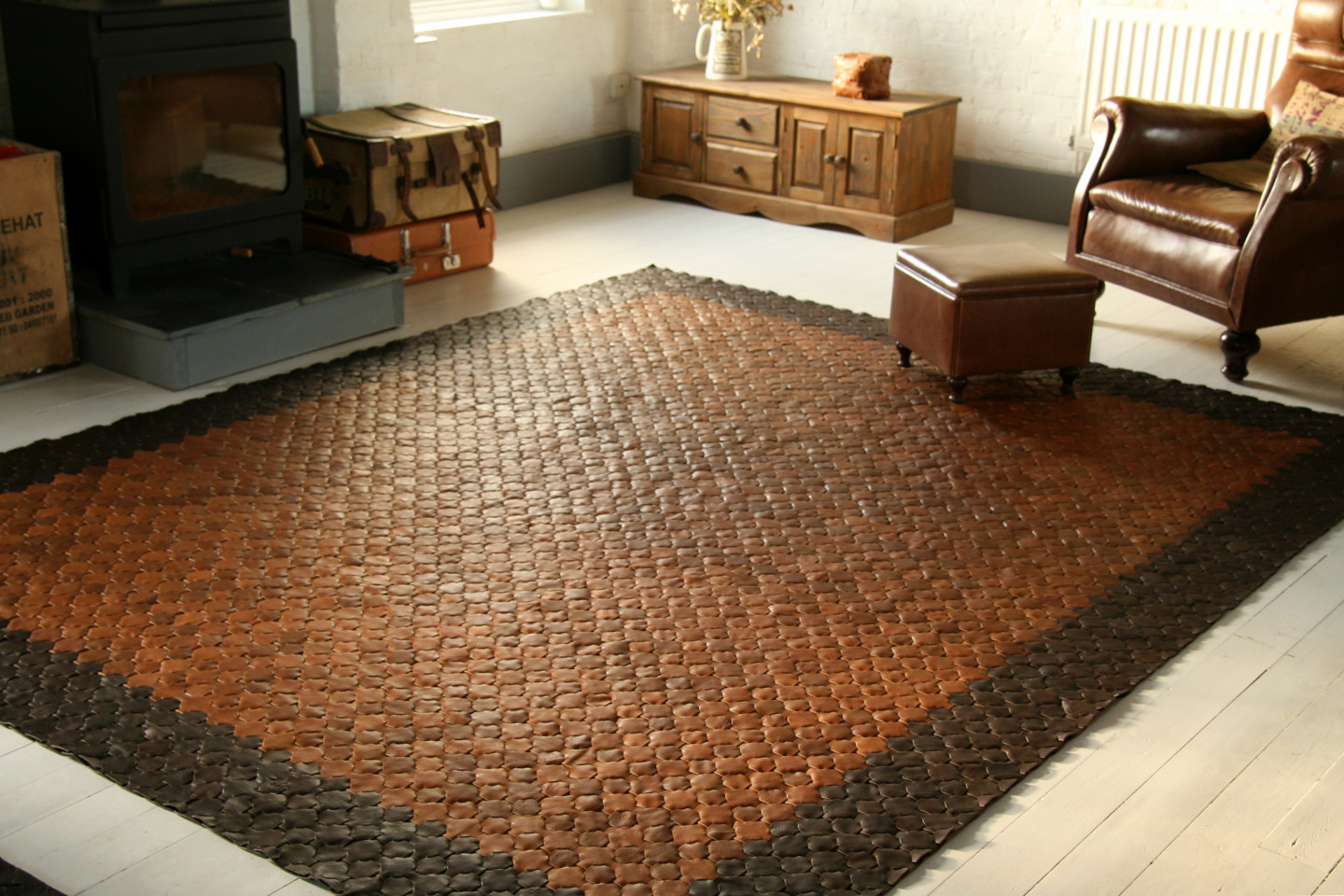Set up in 2005, designers Elvis and Kresse upcycle old fire hoses into desirable textiles for their luxury accessories. Their vision of creating circular goods was realised in 2015 when they became the world’s first Closed-Loop Luxury Leather producer. Using material from the estimated 35,000 tonnes of leather waste in Europe alone, the modular leather constructions can be transformed by the user from carpet to chair to lampshade.
Loop
Rug, Chair, Bag, Elvis and Kresse, (Leather waste, reclaimed scaffolding and decommissioned London Fire Brigade hoses, Kent, England, 2015)
Interview with Kresse Wesling MBE, co-founder of Elvis & Kresse
You successfully upcycled fire hose material into highly desirable products. What inspired this project? And how did you get interested in the Circular Economy, particularly the luxury sector?
Kresse Wesling: Our first interest was in London's decommissioned fire hoses; when we discovered they were going to landfill we mounted a rescue. The ensuing adventure has been about creating the best possible products and business; this goal naturally lead us to design beyond seasons, to embed longevity in our designs by employing highly skilled craftspeople and to pursue circularity as an ultimate goal. We didn't intend to be in the luxury space; we simply wanted to honour the fire hose, and that desire lead us to luxury.
How did you make the step to your current closed-loop production? Could you describe your process of developing the business model?
Kresse Wesling: With the hose we are able to cover an arc of the circular journey. Having thought increasingly about circularity since 2005 we wanted to go further with that arc. We started thinking about solutions for the 800,000 tonne global annual leather scrap problem about 5 years ago. Our first design principle was to 'design for deconstruction'. We didn't want to make products, we wanted to make pieces, something that could be reinvented and reengineered through time. The first three pieces we have employed here, in this rug and chair, are just the beginning of a new business model for us.
(Leather Rug, Courtesy Elvis&Kresse)
How would you describe the different mindsets of Circular Thinking/Design for the CE versus traditional linear thinking for the linear economy? What has been the most challenging part of the process?
Kresse Wesling: We call ourselves backwards designers. We don't start with 'a thing' that we want to make and then acquire the materials to make it. We start with a problem, a niche waste, an undervalued resource, and then work out the best possible way to save it. We want to maximise its value, its future... we are always keen to deploy as many aspects of circularity as we can. The whole process is filled with challenges, but when you start with the premise that waste simply shouldn't exist, no challenge is insurmountable.
Do you think the purchasers of carpet/chair/lamp feel as if they have a different relationship with these objects?
Kresse Wesling: We hope so. We hope that they will see the pieces as tools, and not just parts of a finished product. We hope that they will want to play, experiment and create. We are really keen for people to buy the pieces, or even come to our workshop and cut their own pieces. The closer that people get to the beginning of something, the more they will invest in its future.
Next steps?
Kresse Wesling: 800,000 tonnes a year is a big problem to tackle. It took us 5 years to solve London's fire hose problem, an issue that is about 80,000 times smaller. All of our next steps are related to the leather scrap.
For anyone interested in this field, what books or articles would you recommend to read?
The two books that set us down this track are ones we would still recommend. Silent Spring by Rachel Carson and Mid-Course Correction by Ray Anderson.
Click for Elvis & Kresse



